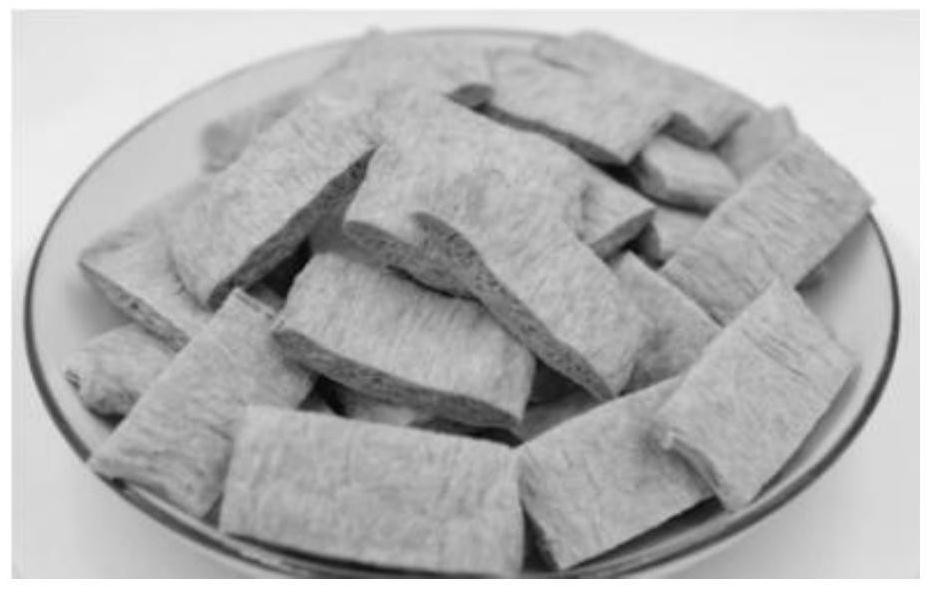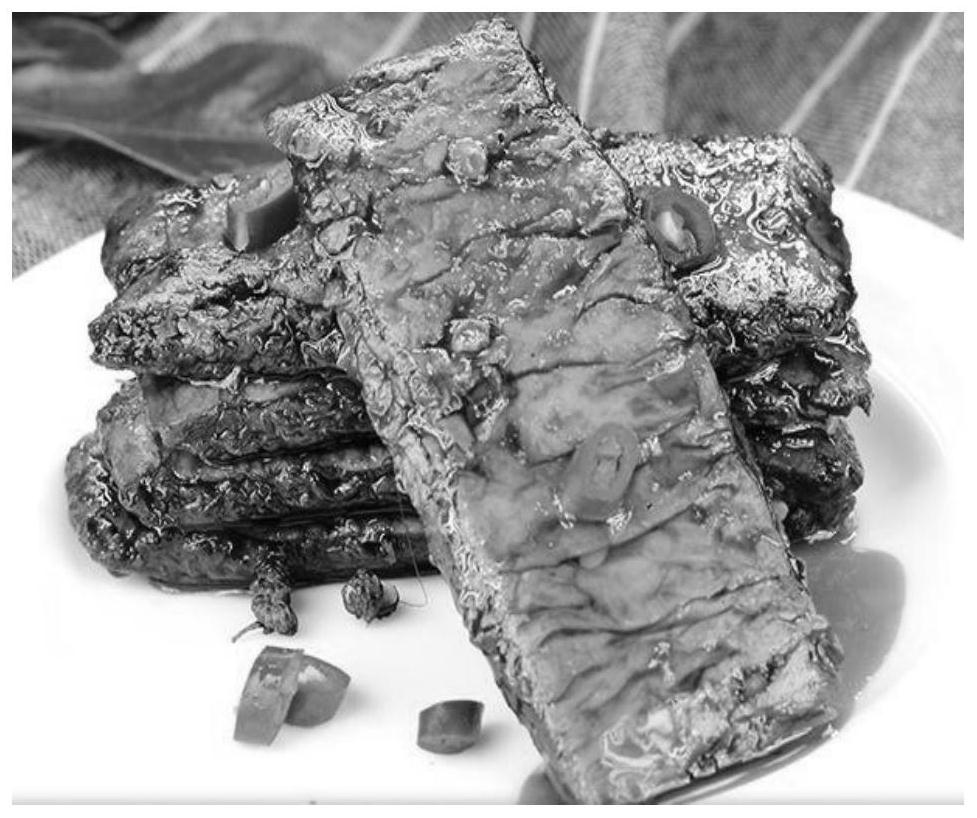Preparation method of plant-based meat substitute and plant-based meat substitute
A plant-based, substitute technology, applied in plant protein processing, microbial/single-cell algae protein processing, climate change adaptation, etc., can solve problems such as poor taste, achieve the effect of expanding protein sources and solving beany smell
- Summary
- Abstract
- Description
- Claims
- Application Information
AI Technical Summary
Problems solved by technology
Method used
Image
Examples
preparation example Construction
[0029] In a first typical embodiment of the present application, a method for preparing a plant-based meat substitute is provided, the preparation method comprising: a) mixing yeast protein, vegetable protein and polysaccharide to prepare a protein mixture; b) Adding one or more of vegetable oil, water and seasoning to the protein mixture, seasoning for the first time to prepare a milky semi-solid solution; c) squeezing the milky semi-solid solution to prepare vegetable-based meat; d) rehydration and / or shape modification of the plant-based meat, and second seasoning to prepare a plant-based meat substitute.
[0030] Using the above preparation method, yeast protein, vegetable protein and polysaccharide are used as raw materials to prepare a protein mixture. Through the above combination, the fishy smell problem caused by the large use of vegetable proteins including soybean protein can be avoided, and the taste of the final product can be improved. , can better form plant-bas...
Embodiment 1
[0054] 1. Mix 70 parts of yeast protein, 10 parts of soybean protein, 8 parts of pea protein, 8 parts of wheat protein and 4 parts of polysaccharide according to a certain proportion.
[0055] 2. The polysaccharides include microbial polysaccharides (yeast glucan, yeast mannan polysaccharides, plant polysaccharides (konjac gum, guar gum, carrageenan, xanthan gum, methyl cellulose, and curdran).
[0056] 3. Add 55 parts of water, 15 parts of vegetable oil and 3 parts of seasoning to the uniformly mixed material, and stir to form a milky semi-solid solution.
[0057] 4. Add the milky semi-solid solution to the extrusion machine. The extrusion extruder is divided into dry extrusion and wet extrusion. The dry extrusion process parameters (the moisture content in the extrusion process is controlled at 35%, and the temperature in the extrusion process is controlled at 190 ° C) to obtain dry extrusion prepared. plant-based meat (see figure 1 ). Wet extrusion process parameters (th...
Embodiment 2
[0062] 1. Mix 50 parts of yeast protein, 10 parts of soybean protein, 10 parts of pea protein, 5 parts of wheat protein and 25 parts of polysaccharide according to a certain proportion.
[0063] 2. The polysaccharides include microbial polysaccharides (yeast glucan, yeast mannan polysaccharide), plant polysaccharides (konjac gum, guar gum, carrageenan, xanthan gum, methyl cellulose, keratin gum).
[0064] 3. Add 60 parts of water, 10 parts of vegetable oil and 2 parts of seasoning to the uniformly mixed material, and stir to form a milky semi-solid solution.
[0065] 4. Add the milky semi-solid solution to the extrusion machine. The extrusion extruder is divided into dry extrusion and wet extrusion. The dry extrusion process parameters (the moisture content in the extrusion process is controlled at 30%, and the extrusion process temperature is controlled at 195 ° C), and the wet extrusion process parameters are (The moisture content during the extrusion process is controlled ...
PUM
 Login to View More
Login to View More Abstract
Description
Claims
Application Information
 Login to View More
Login to View More - R&D
- Intellectual Property
- Life Sciences
- Materials
- Tech Scout
- Unparalleled Data Quality
- Higher Quality Content
- 60% Fewer Hallucinations
Browse by: Latest US Patents, China's latest patents, Technical Efficacy Thesaurus, Application Domain, Technology Topic, Popular Technical Reports.
© 2025 PatSnap. All rights reserved.Legal|Privacy policy|Modern Slavery Act Transparency Statement|Sitemap|About US| Contact US: help@patsnap.com



